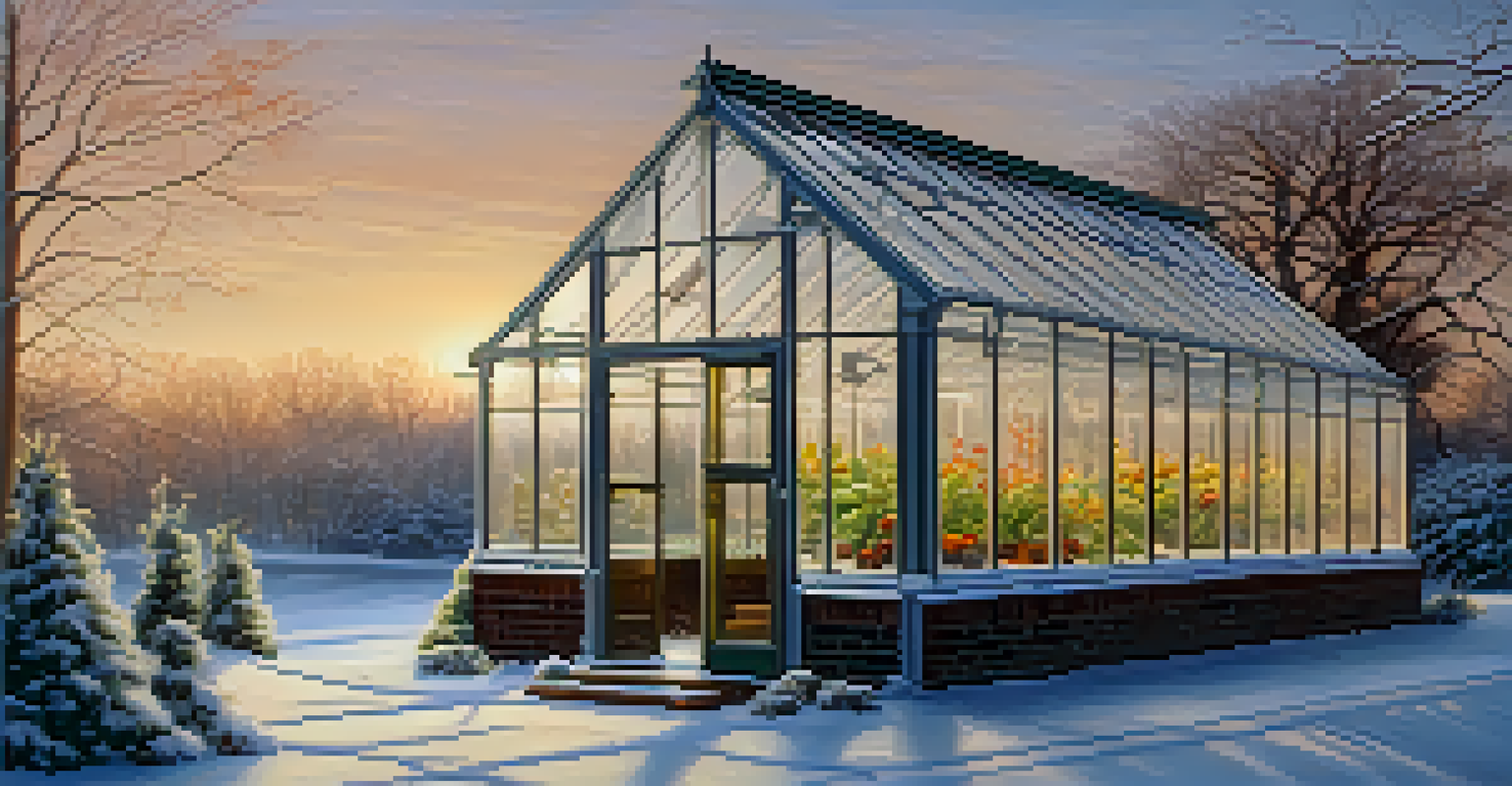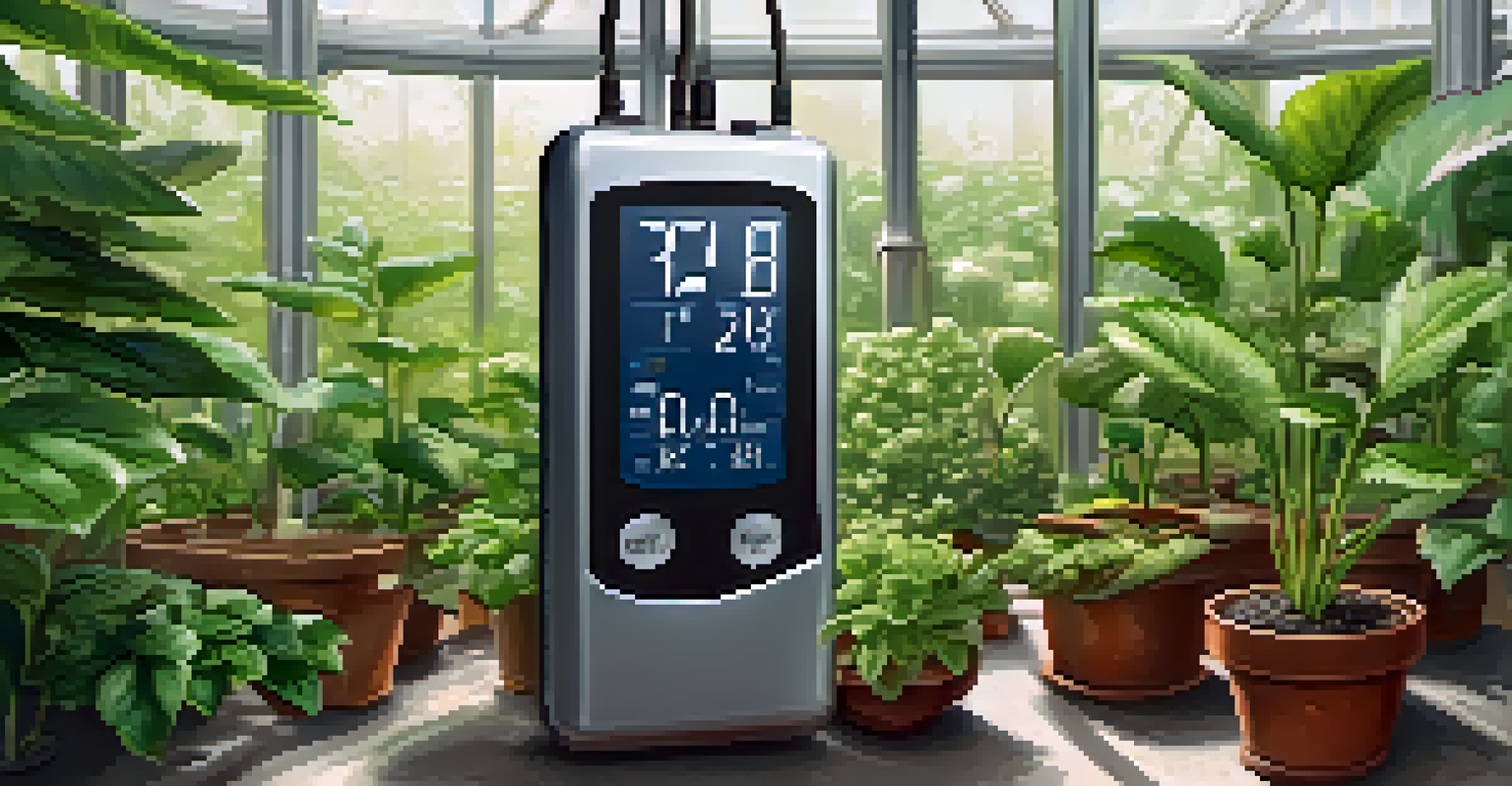Top Tips for Maintaining Optimal Temperature in Greenhouses

Understanding the Importance of Temperature Control
Temperature control in a greenhouse is vital for plant health. Plants thrive within specific temperature ranges, and even slight deviations can stress them. Maintaining optimal conditions enables better growth, increased yield, and overall vitality.
The best way to predict the future is to create it.
Think of your greenhouse as a cozy home for your plants; just like humans, they prefer certain temperatures to feel comfortable and flourish. Too cold, and they may go dormant; too hot, and they might wilt. Understanding these needs is the first step in effective greenhouse management.
In essence, mastering temperature control not only boosts plant productivity but also enhances the satisfaction of seeing your hard work pay off. This is why it's crucial to invest time in learning how to maintain the right balance.
Utilizing Greenhouse Ventilation Systems
One of the most effective ways to control temperature is through proper ventilation. Ventilation systems help circulate air, which can prevent overheating, especially during sunny days. By opening vents or using fans, you can create a more stable environment for your plants.

Imagine cooking in a hot kitchen without a window; it would be stifling! Similarly, your plants need airflow to thrive. Proper ventilation allows them to breathe and can significantly reduce humidity levels, which prevents mold and diseases.
Temperature Control is Crucial
Maintaining optimal temperature in a greenhouse is essential for plant health and productivity.
Regularly check your ventilation systems to ensure they are functioning optimally. A well-ventilated greenhouse is not only cooler but also healthier for your plants, creating an ideal growth environment.
Incorporating Shade Cloths and Screens
Shade cloths are a fantastic tool for managing sunlight and temperature inside your greenhouse. By blocking out some of the sun's rays, you can keep the internal temperature more stable during the hottest parts of the day. This is especially important in regions with intense sunlight.
In the midst of chaos, there is also opportunity.
Think of shade cloths as sunglasses for your plants; they protect them from harmful UV rays while still allowing enough light for photosynthesis. These cloths come in various densities, so you can choose the right one based on your plants' needs and local climate.
Installing retractable shade screens can also add versatility to your greenhouse. You can adjust them based on the weather, ensuring that your plants are always in their comfort zone, regardless of external conditions.
Investing in Heating Systems for Cooler Months
When temperatures drop, a reliable heating system becomes essential to protect your plants. Electric heaters, gas heaters, or even hot water systems can provide the warmth needed to keep your greenhouse cozy. Choosing the right system depends on the size of your greenhouse and your budget.
Picture a chilly winter evening; without a warm blanket, you’d feel uncomfortable. Similarly, your plants need warmth to continue their growth during colder months. A stable temperature helps prevent frost damage and allows for year-round cultivation.
Ventilation Enhances Growth
Proper ventilation systems are vital for regulating temperature and preventing overheating in your greenhouse.
Regular maintenance of your heating system is crucial. Check for any issues before winter hits, ensuring your plants stay snug and protected against the cold.
Monitoring Temperature with Thermometers and Sensors
Temperature monitoring is key to maintaining optimal conditions in your greenhouse. Using thermometers or digital sensors can provide real-time data on the internal climate. This information allows you to make informed decisions about when to ventilate or heat the space.
Think of these devices as your plants' personal weather stations. They help you stay one step ahead, ensuring that you're not caught off guard by sudden temperature changes. Many modern sensors even connect to apps, giving you remote access to your greenhouse conditions.
Regularly check and calibrate your monitoring equipment to ensure accurate readings. This practice will help you maintain a more consistent environment for your plants.
Using Thermal Mass to Regulate Temperature
Incorporating thermal mass into your greenhouse can help stabilize temperature fluctuations. Materials like water barrels or stone can absorb heat during the day and release it at night, creating a more consistent climate. This method is particularly effective in areas with wide temperature swings.
Imagine how a stone fireplace retains heat long after the fire has died down; similarly, thermal mass can provide warmth throughout the night for your plants. This natural regulation can reduce the need for mechanical heating, saving both energy and costs.
Adapt Strategies Seasonally
Adjusting greenhouse management techniques according to seasonal changes ensures plants thrive year-round.
When designing your greenhouse, consider adding thermal mass elements strategically. This can enhance the overall efficiency of your temperature management strategies.
Regular Maintenance and Inspections
Regular maintenance of your greenhouse is essential for optimal temperature control. Check for any cracks, leaks, or damaged components that could affect insulation and airflow. A small issue can lead to significant temperature fluctuations if left unchecked.
Imagine a small hole in your roof; over time, it could lead to a leaky mess. Similarly, neglecting minor repairs can snowball into larger problems that complicate temperature management. Regular inspections can help you catch these issues early.

Establish a routine maintenance schedule to ensure your greenhouse remains in top shape. This practice not only prolongs the life of your greenhouse but also supports a stable environment for your plants.
Adapting to Seasonal Changes for Optimal Growth
As seasons change, so do the temperature needs of your greenhouse plants. Understanding these seasonal variations allows you to adjust your strategies accordingly, ensuring that your plants remain healthy throughout the year. This means being proactive about heating in winter and increasing ventilation in summer.
Think of your greenhouse as a living organism; it requires different care as it navigates through the seasons. By adapting your management techniques, you can create a more responsive environment that caters to your plants' evolving needs.
Keep a seasonal calendar to remind you of necessary adjustments. This will help you stay organized and ensure your plants receive the care they need, no matter the time of year.